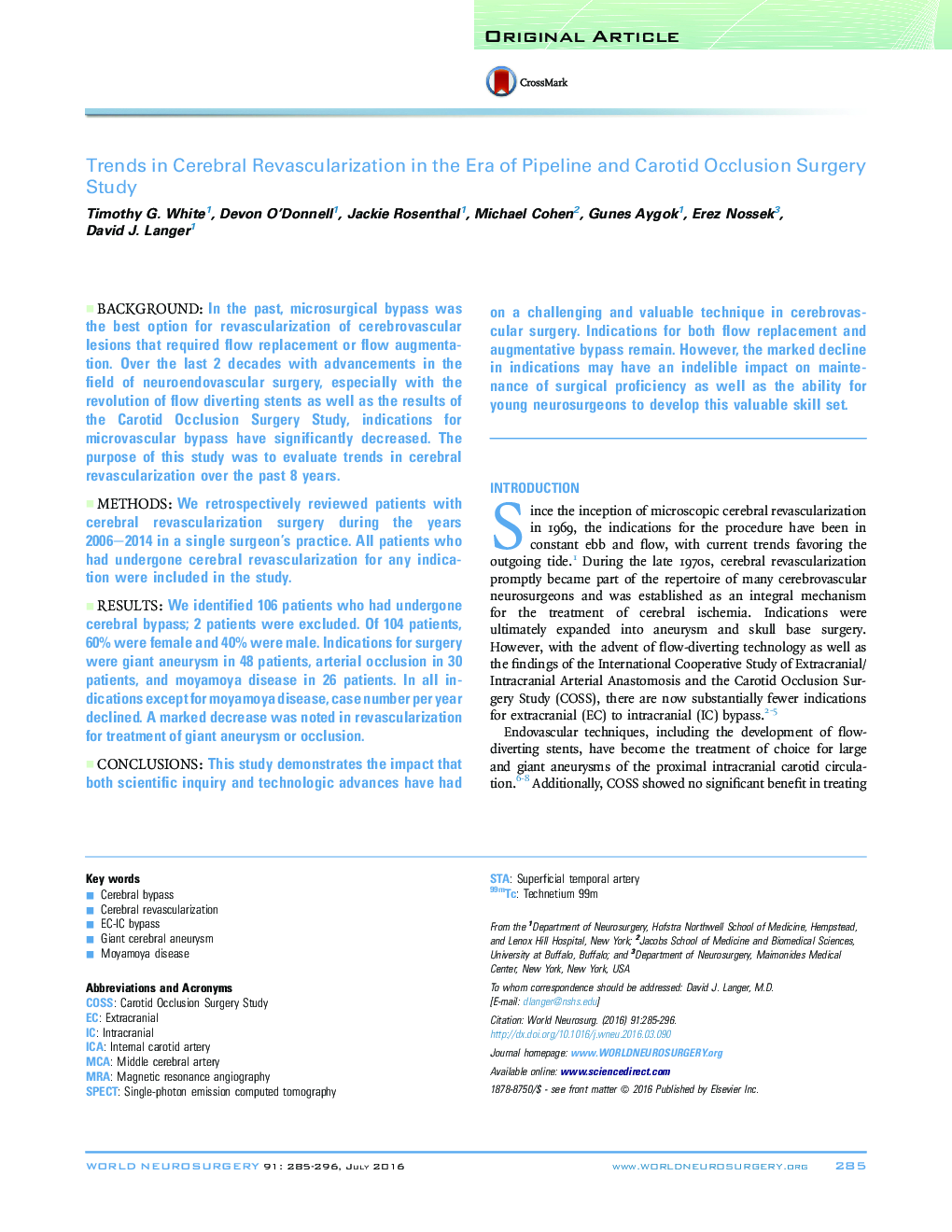| Article ID | Journal | Published Year | Pages | File Type |
|---|---|---|---|---|
| 3094553 | World Neurosurgery | 2016 | 12 Pages |
BackgroundIn the past, microsurgical bypass was the best option for revascularization of cerebrovascular lesions that required flow replacement or flow augmentation. Over the last 2 decades with advancements in the field of neuroendovascular surgery, especially with the revolution of flow diverting stents as well as the results of the Carotid Occlusion Surgery Study, indications for microvascular bypass have significantly decreased. The purpose of this study was to evaluate trends in cerebral revascularization over the past 8 years.MethodsWe retrospectively reviewed patients with cerebral revascularization surgery during the years 2006–2014 in a single surgeon's practice. All patients who had undergone cerebral revascularization for any indication were included in the study.ResultsWe identified 106 patients who had undergone cerebral bypass; 2 patients were excluded. Of 104 patients, 60% were female and 40% were male. Indications for surgery were giant aneurysm in 48 patients, arterial occlusion in 30 patients, and moyamoya disease in 26 patients. In all indications except for moyamoya disease, case number per year declined. A marked decrease was noted in revascularization for treatment of giant aneurysm or occlusion.ConclusionsThis study demonstrates the impact that both scientific inquiry and technologic advances have had on a challenging and valuable technique in cerebrovascular surgery. Indications for both flow replacement and augmentative bypass remain. However, the marked decline in indications may have an indelible impact on maintenance of surgical proficiency as well as the ability for young neurosurgeons to develop this valuable skill set.
